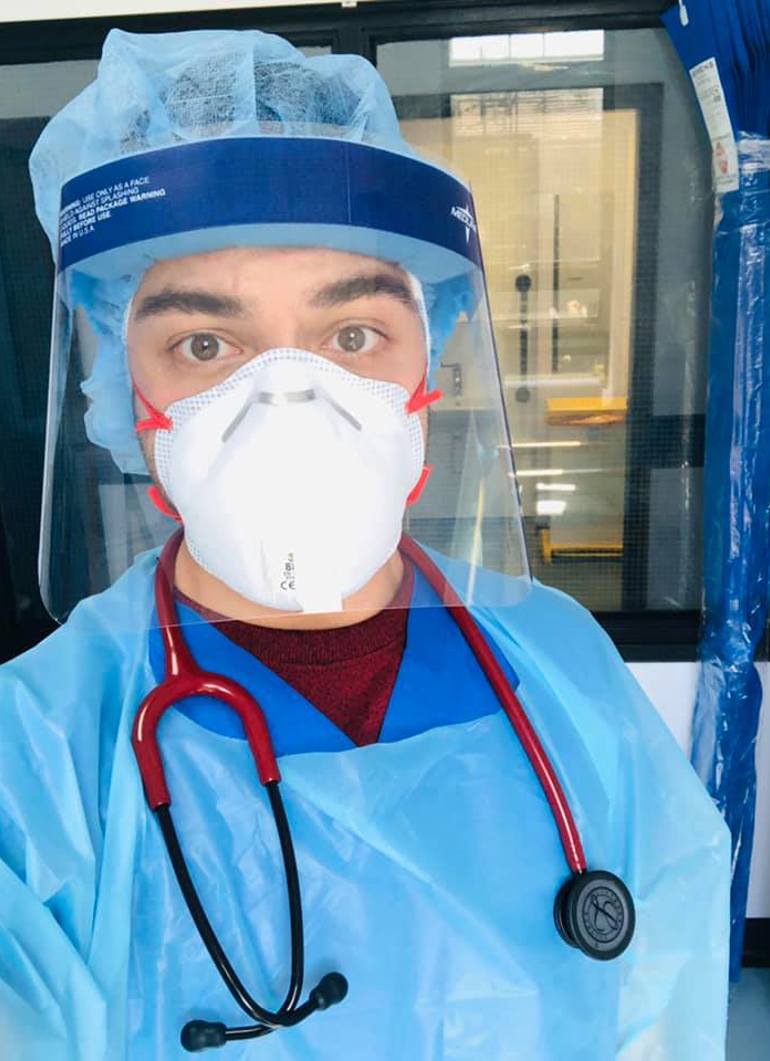Having been studying science for my whole life and strived for a career which involves helping others, Biomedical Science seemed like the right career path for me, and in part it was. I thoroughly enjoyed learning the pathophysiology of complex diseases, for example, however, it also involved countless hours of research in fields such as molecular genetics, and I felt a need for a more hands on approach to patient care. This is where I stumbled upon the role of a Physician Associate.
The training was intense. During the two years of training to become a Physician Associate I spent the majority of my time on placement, and one of my favourite rotations was the fast-paced and orderly chaotic department of A&E. Managing patients with undifferentiated diagnoses greatly developed my diagnostic skills.
When I started as a Respiratory Physician Associate in January 2020 at Morriston Hospital, we had heard news of patients developing a pneumonia of unknown aetiology emerging from China, later termed COVID-19. At the time this sounded very distant, and my role was to assess and manage patients with complex respiratory conditions such as COPD, bronchiectasis, empyema, lung cancer, and pneumothorax.
Not long after, news broke of the virus reaching Italy and how it was overwhelming their health system; mortality rates were high, ventilators were in short supply, and health care professionals were dying. From March 2020, COVID-19 was declared a pandemic.
Upon hearing the devastating effects of COVID-19, the hospital created a new Respiratory Assessment Unit (RAU) to assess patients coming to hospital with respiratory symptoms separately from the others, to limit the interaction of potential COVID-19 patients with others. I was re-deployed from the respiratory ward to the new unit, where my role was to assess and manage these patients. This involved a thorough history and examination, performing and interpreting diagnostic tests, forming a diagnosis, and developing a management plan.
Most patients admitted to the unit presented with signs and symptoms of COVID-19, and these presentations varied significantly, ranging from mild infection, to severe COVID-19 pneumonitis with hypoxia refractory to maximum oxygen therapy and requiring intubation and ventilation. Other presentations to the RAU included pulmonary embolism, pneumothorax, exacerbations of COPD, and pulmonary oedema.
As a Physician Associate, we are trained as generalists and then specialise early. My training gave me a strong grounding in general medicine before I specialised in respiratory medicine, and developed my ability to review patients with complex respiratory conditions, and so allowing me to contribute to the hospital pandemic response.
While on RAU I was a permanent member of staff, meaning I did not rotate through other departments and specialties like the medical doctors. Here I became well versed with the emerging protocols and guidelines for COVID-19, providing continuity of care for patients as well as medical continuity and support for the staff of the RAU. Other health care professionals were re-deployed to the RAU from a variety of specialties including maxillofacial and plastics, and so with little exposure to respiratory medicine. With my resident experience I was able to support them when triaging COVID-19 patients.
As the first wave began to fade, I was assigned back to the respiratory ward. There was a sense of normality, as the regular respiratory cases started to flow back into the ward, however, this was short lived. Slowly the bays on the respiratory ward became COVID bays again, and before we knew it, the whole respiratory ward was at capacity with COVID-19 patients and we were well in the midst of a second wave.
The main complication of COVID-19 is respiratory failure and it came no surprise that the respiratory ward would become the centre for the most critically ill patients behind intensive care.
CPAP has become a well-established therapy for severe oxygenation failure in COVID-19 patients, and the respiratory ward essentially became a CPAP high dependency unit. Assessing and treating severely ill patients provided invaluable experience.
Given the high acuity of our patients the respiratory ward is now situated next to the Intensive Care Unit (ITU) to allow us to work closely with their teams, and means a deteriorating patient can now be escalated to ITU quicker.
COVID-19 is surreal. It is highly transmissible and is now responsible for almost 1.5 million deaths worldwide. The stark reality of young and previously healthy individuals requiring escalation to ITU, as well as families being admitted together is truly eye opening.
We have faced many difficulties during the pandemic and we still have a long way to go. Long shifts in full PPE, significant staffing shortages due to contracting or being exposed to the virus, and difficult family discussions are a few to note. However, I work with such an amazing and supportive team and I am proud to form part of the multidisciplinary team stepping up in the fight against COVID-19.
At the time of writing this I developed symptoms while working on the respiratory ward and now have tested positive for COVID-19. I will be self-isolating for the next 10 days, however, I am eager to return to help my colleagues.



